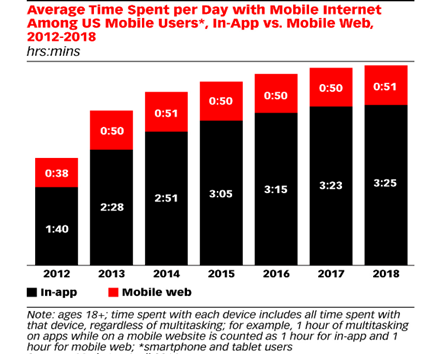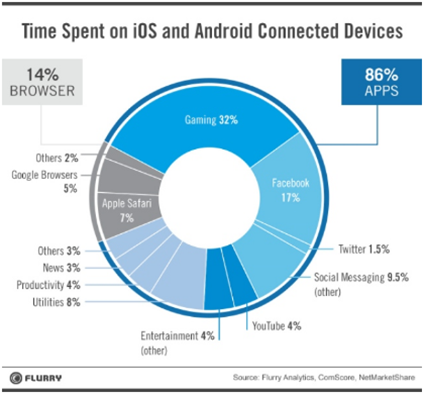Every successful app that was launched has never been completely ready for the users. Do you remember when Facebook first launched its app. It had so many limitations. Now, you can edit your pictures, upload videos as display pictures, use so many more emoticons apart from ‘Likes’ and even react with .GIF images. Apps like Facebook, Airbnb, Uber were not built in a day. There was a constant upgrading process that took place behind the scenes attracting more and more users.
Smart scoping is basically scaling down the original scope of your mobile app so that it gives you the chance to keep upgrading it and making it better. This doesn’t in anyway mean that you build substandard app that is not user friendly or serve any purpose.
Smart scoping, basically, helps you concentrate on your highest priority to achieve your business opportunity or to address the issues in your app. Your focal point should be at upgrading after your application, so as to achieve the best impact in the fastest time.
Some ways to smart scope your application:
- Validate and invalidate the assumptions by gathering feedback to improve future versions
- Identify the bugs and concentrate on the user-friendly aspect of the app
- Track usage behavior
- Gather real user feedback from actual app users
Limiting the Scope of the App
Smart scoping also involves limiting the scope of your app. This doesn’t mean that it should have any less features or usability restrictions; it just means that you need to gather the relevant feedback and then start working on it, one upgrade at a time.
Although the only time that you need to “de-scope” your app is in the following situations:
New Idea/Untested Market: Making an app that is absolutely new to the market means that you need to go slow and get as much feedback and user data as possible. For example, when Uber launched it was a fairly simple app that allowed the user to book a cab over the phone. Over time new features like ‘Rentals’ and ‘Out station’ (fairly recent) were introduced in the app.
Meeting Deadlines: If you have a deadline that you can’t miss, you need to limit your app instead of overloading it with features that are faulty. Features that have bugs have more of a downside than not offering the feature at all.
Budget: Budgeting plays a huge role in designing an app. You don’t want to overshoot the budget and land in a soup, would you? Hence, scoping intelligently and improving it step-by-step would ensure that you don’t overstep your budget.
Example of a Successful and an Unsuccessful App
Let’s take an example of two apps; one that succeeded and the other that failed – Hailo and Uber.
Hailo was a mobile app that you could use to hail a cab (the regular yellow cabs).With a 100 million funding it hit NYC in 2013; but so did Uber. Now, Uber was supposed to cater to a posh audience with their black car but what they did instead was that they introduced Uber X with really cheap prices.
Already hit with that aspect, Hailo further did not do their market research. Most “yellow” cabs in NYC don’t have a smartphone. Hence, reaching out to them and booking the cabs was becoming a problem.
If Hailo had smart scoped the project by investing less money on an untested market, they would have got real time user feedback and not invested more time and effort but instead could have come up with a solution and diverted their business model. But what Uber did was that they introduced high end cars and then changed their model, after gathering real time user feedback. This led to their success. So remember, “Uber wasn’t built in a day”, they smart scoped their app, leading it to success.
Reference Source: https://blog.placeit.net/apps-fail-teach-us-app-marketing/
So, what did we learn?
In the end, it all boils down to delivering a high quality application adds value to users, meets your objectives and that aligns with the budget and timeline kept in mind. Ensuring that you scope the project intelligently with logical milestones based on user feedback will help your application excel and widely used. Create a scope statement at the beginning of the project and concentrate on making an app that leads you to profit rather than bankruptcy and a failed effort.
A famous quote reads, “Half of being smart is knowing what you are dumb about”, which stands true in the case of even smart scoping your app!





